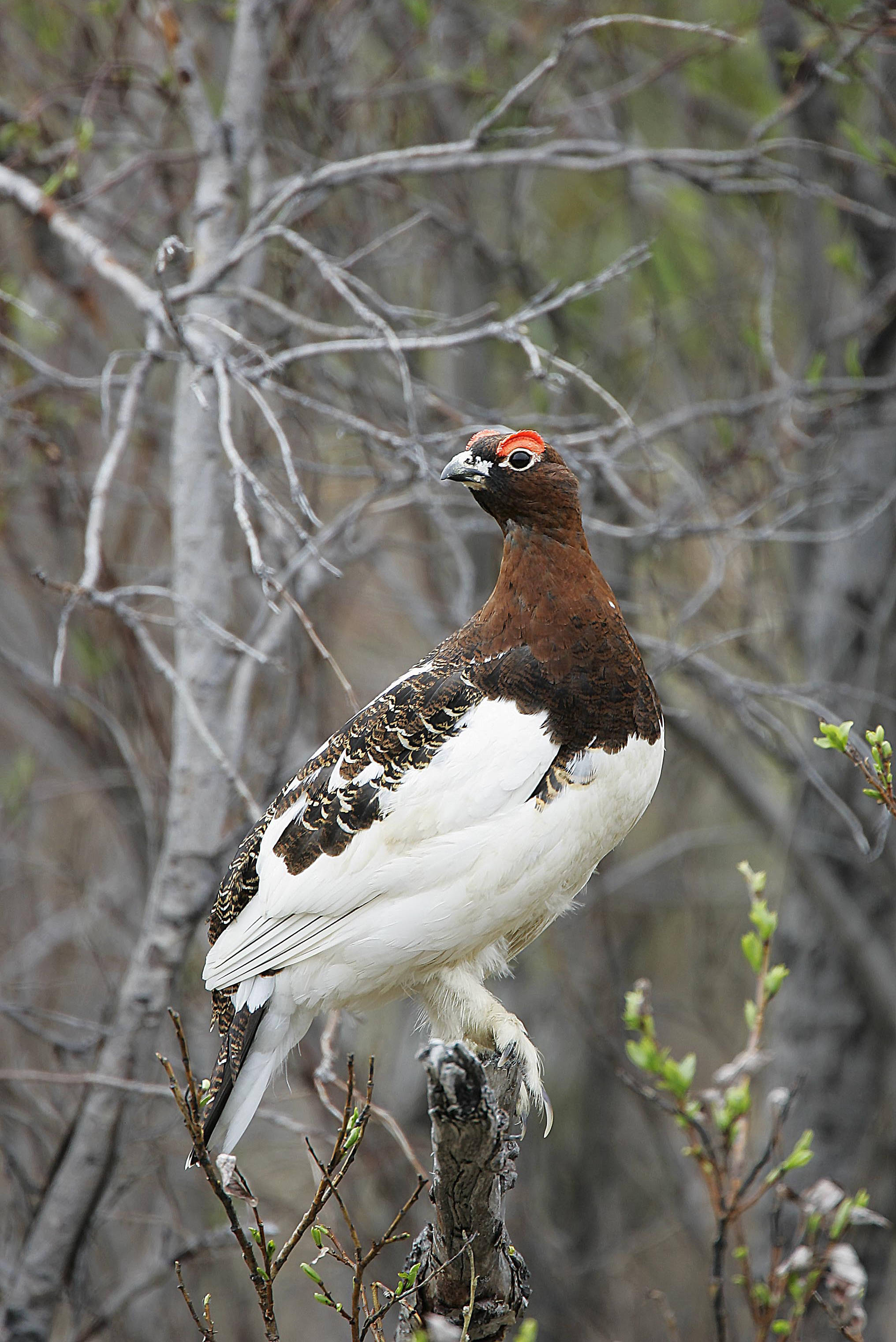I saw a small flock of willow ptarmigan along the Seward Highway near Summit Pass last week. I had to take a hard look as the Kenai Peninsula is one of the few places in North America that willow, rock and white-tailed ptarmigan coexist.
It reminded me that the willow ptarmigan is Alaska’s state bird. And, like the children’s book “If You Give a Moose a Muffin,” it got me wondering how this designation came about in Alaska. More generally, what have other states chosen as their state bird?
The designation of state birds began in 1927, when the Alabama, Florida, Maine, Missouri, Oregon, Texas and Wyoming legislatures selected their state birds. All 50 states, the District of Columbia, our two commonwealths (Puerto Rico, Northern Mariana Islands) and two of our three territories (Guam, U.S. Virgin Islands) have official birds. Only American Samoa does not.
Alaska, California, South Dakota and Pennsylvania permit hunting of their state birds. Pennsylvania designated a state game bird (ruffed grouse) but not a state bird. Alabama, Georgia, Massachusetts, Missouri, Oklahoma, South Carolina and Tennessee declared both a state bird and a state game bird. In addition to the northern mockingbird as its state bird, Mississippi named the wood duck its state waterfowl.
My internet surfing couldn’t help me figure out what prompted states to initially designate an official bird, other than perhaps as a show of pride in their local avifauna. Legislators sometimes used regional bird names, such as the “yellowhammer” (northern flicker) in Alabama, “red bird” (northern cardinal) in Indiana and “nēnē” (Hawaiian goose).
Forty-seven legislatures chose a bird species native to their state. The northern cardinal (7), western meadowlark (6), northern mockingbird (5), American goldfinch (3) and American robin (3) are the five most commonly recognized species, collectively designated as the official bird in 26 states.
The three non-native species recognized by states tell unusual stories. The Delaware Blue Hen is a blue strain of the American gamecock. The Rhode Island Red is an American breed of domestic chicken, developed for its egg-laying abilities, by crossbreeding birds of Oriental origin such as the Malay with brown Leghorn birds from Italy. South Dakota chose the ring-necked pheasant, in honor of its contemporary role as an important game species despite its non-native origin.
Some states picked unusual birds like the lark bunting (Colorado), brown thrasher (Georgia), and greater roadrunner (New Mexico). Three species, the endangered Hawaiian goose, endangered Guam rail, and the Puerto Rican spindalis, are endemic to those islands and occur nowhere else in the world. In the case of the Willow ptarmigan, Alaska is the only state in which it occurs, although its circumboreal distribution includes other countries like Canada.
The Willow ptarmigan was designated as our state bird in 1955, even before Alaska became the 49th state. Six thousand schoolchildren weighed in with their preferences and the winning choice was sent to the Territorial Legislature.
In signing the bill, Territorial Governor B. Frank Heintzleman wrote, “The schoolchildren of Alaska have shown a great interest in selecting an official bird… The Willow ptarmigan has a number of qualities which recommend it for this signal honor. It is found in all parts of Alaska and is widely known and easily recognized.
“It does not fly south in the fall as do most of the ducks, geese, swans and song birds, but spends its entire life in the Territory. I am today signing House Bill No. 2 of the 22nd Alaska Legislature, and 90 days from this date the Willow ptarmigan will become the official bird of the Territory of Alaska and entitled to all the prerogatives, pleasures and advantages of that designation.”
Arizona was the last state to choose its bird in 1973. Yet the interest in state birds continues even today. I ran across an interesting story that recently played out in Maine. As one of the first states to choose its state bird in 1927 — the chickadee — Maine didn’t bother to identify whether it meant the boreal or black-capped chickadee.
Schoolchildren weighed in again, this time by fourth-graders at the Margaret Chase Smith School in Skowhegan, Maine, asking for clarity. Unfortunately, the Maine Legislature’s Joint Standing Committee on State and Local Government killed the bill by a unanimous 10-0 vote.
Regardless of the outcome, the Maine controversy is a sign that people really value birds. State bird designations ultimately reflect 50 unique relationships between the human and avian residents that share space across the United States.
Dr. John Morton is the supervisory biologist at Kenai National Wildlife Refuge. Find more Refuge Notebook articles (1999–present) at https://www.fws.gov/refuge/Kenai/community/refuge_notebook.html.

